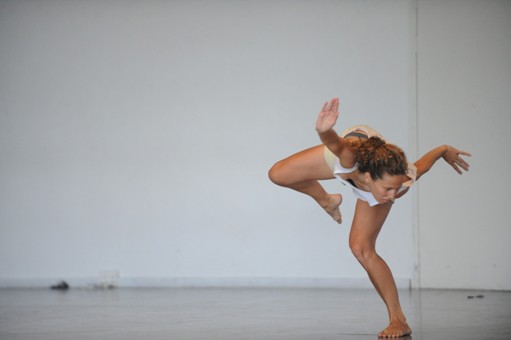
Wild limbs and freedom of motion – a lone dancer moves on the wide floor of the Batsheva Dance Company studio. Soon the rest of the company joins her, in summer colors, tanks, shorts and T shirts, filling the studio with fast, powerful movement, their feet pounding out an intense rhythm in the August heat. Then all motion stops, hands frame a face looking out into the crowd: Welcome.
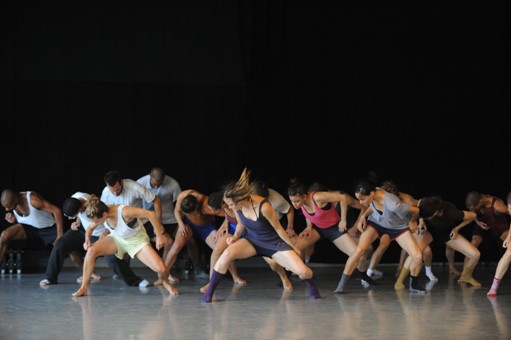
There was far more dance in the studio than words as the Batsheva Dance Company announced its new season to the press yesterday, August 23, 2010 – and that is exactly as it should be. Executive Director Dina Eldor had exciting news to announce – Petrouchka, a new work by house choreographer Sharon Eyal in collaboration with the Israeli Philharmonic conducted by Zubin Mehta, will premiere in October, and a new work by Ohad Naharin will open the 50th anniversary of the Israel Festival in May 2011. Yet the real excitement is in the studio, in the movement, and that is what Artistic Director Ohad Naharin and the company shared with an intimate audience in the studio.
The company will begin the season with performances of Project 5 at the Joyce Theater in New York from September 21 – October 3, 2010. The program includes: B/olero (2008), a duet performed to a synthesized interpretation of the work by Isao Tomita; the visceral cabaret trio “Park” from “Moshe” (1999); “George and Zalman” (2006); and “Black Milk” (1985/1991). Performed by five dancers, Project 5 has two casts, one female and one male.
Project 5 expresses Naharin’s approach to dance in several critical aspects – the re-visioning of previous choreographic work, the cumulative element in individual works and the body of work as a whole, and the performance of the work by different casts.
Naharin shared this perspective in the studio, beginning with “George and Zalman”, a work for five dancers to a poem by Charles Bukowski from Mockingbird Wish Me Luck (1972). The text is broken up to work in parallel to the movement in a cumulative process; always returning to the point of origin, yet transformed – enhanced with layers of movement and meaning. The structure is clear and precise, the movements repeat, yet within the frame a powerful individuality asserts itself time and again. The sense of the words and moods shifts with each repetition, as another phrase is added to the poem. Each journey is pre-determined yet ever-changing. Beginning with the single word “Ignore” it is a provocative paean to awareness.
The studio performance began with a male cast, which was replaced about mid-way through the piece with a female cast, then Naharin stopped the action yet again, bringing in a different all-female cast, “to show that its not about gender, but an idea.” The immediate connotation of different casts is one of suppression of individuality – yet perhaps perversely, it has the opposite effect. The dancers are interchangeable in the sense that many dancers can perform the same role. Yet the experience of seeing the work performed by different casts emphasizes the individuality, expressiveness and creativity of the dancers. The work is transformed and created anew in each performance.
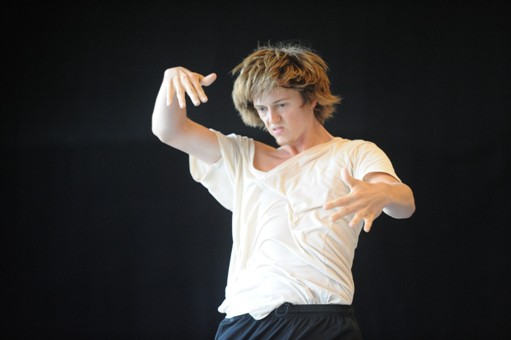
Over the years Naharin has presented his choreographic works in different contexts and combinations, selections from full length works have been recombined into performances such as DecaDance and Project 5, acquiring a different feel and expressiveness in the juxtaposition with other works. In addition, Naharin’s work with the dancers is an ever-evolving process, powered by Gaga, the movement language he has developed, which forms the core of the company’s training and practice. Working on movement through imagery and an internal sense of the process, the dancers bring new elements to the choreography each time it is performed. One of the pleasures of Project 5 is that the proximity of performances by the female and male casts allows the viewer to experience this transformation of the work.
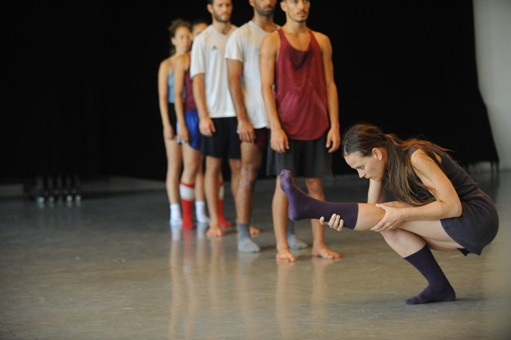
Petrouchka will premiere on October 6, 2010 at Binyanei HaUma – the International Convention Center in Jerusalem, and will be performed by the Batsheva Ensemble. Sharon Eyal had just begun working with the dancers the day before, yet presented a brief glimpse of the work, followed by three fiercely lyric solos from her most recent work “Bill”. The ballet Petrouchka, with music composed by Igor Stravinsky and choreography by Mikhail Fokine, premiered in Paris in 1911 with Vaslav Nijinsky in the lead role. The main characters are the puppets – Petrouchka, the ballerina and the Moor – a love triangle complicated by the fine line between life and art. Eyal noted that although the original ballet is story-based, “I usually don’t work with stories, with Petrouchka I wanted to take it to a more abstract place, to create form.”
Petrouchka will be performed: October 6 at the International Convention Center (Binyanei HaUma) in Jerusalem, October 7 – 10 at the Mann Auditorium (Heichal HaTarbut) in Tel Aviv, and October 11 – 12 at the Haifa Auditorium.
To see more of Gadi Dagon’s photographs of the studio presentation, click here.
AYELET DEKEL

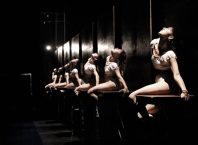
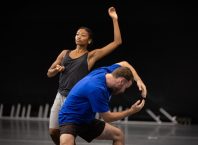
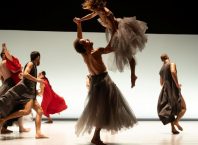


Comments are closed.